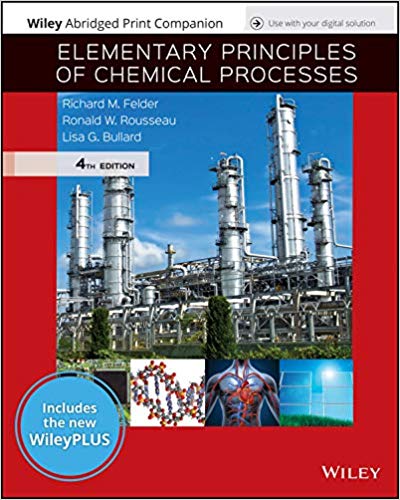Answered step by step
Verified Expert Solution
Question
1 Approved Answer
10 gmol/min of liquid-liquid mixture of acetaldehyde and water in 1:1 molar ratio at 50 C, 5 bar is vaporized by mixing with superheated

10 gmol/min of liquid-liquid mixture of acetaldehyde and water in 1:1 molar ratio at 50 C, 5 bar is vaporized by mixing with superheated steam at 5 bar in an adiabatic mixer such that the final vapor mixture is at 180 C, 5 bar and contains 5 mol% of acetaldehyde. The goal is to determine the flow rate and temperature of the steam required for the process. (a) Determine whether it makes sense or not that acetaldehyde at 50 C, 5 bar is in liquid state. Arguments without quantitative support will not receive any credit. Hint: think about a concept you have learnt in this class relating temperature, pressure, and state, and the one relevant equation. (b) Draw a process diagram. Label all information, including stream variables, pressure and temperature. (c) Write and solve material balances to determine the flow rate. (d) Determine the input steam temperature using energy balance following the steps below: Specify the reference states for doing energy balance. Hint: using liquid acetaldehyde at its normal boiling point, 1 atm as ref. might make later calculations more intuitive. For water, use the steam table. Write the energy balance equation. Calculate the molar enthalpy for each component. Use the steam table whenever possible and show your work clearly. It might help to stay organized with an enthalpy table. Do not ignore the difference between atm and bar. Solve energy balance and determine the temperature of the input steam.
Step by Step Solution
There are 3 Steps involved in it
Step: 1

Get Instant Access to Expert-Tailored Solutions
See step-by-step solutions with expert insights and AI powered tools for academic success
Step: 2

Step: 3

Ace Your Homework with AI
Get the answers you need in no time with our AI-driven, step-by-step assistance
Get Started


